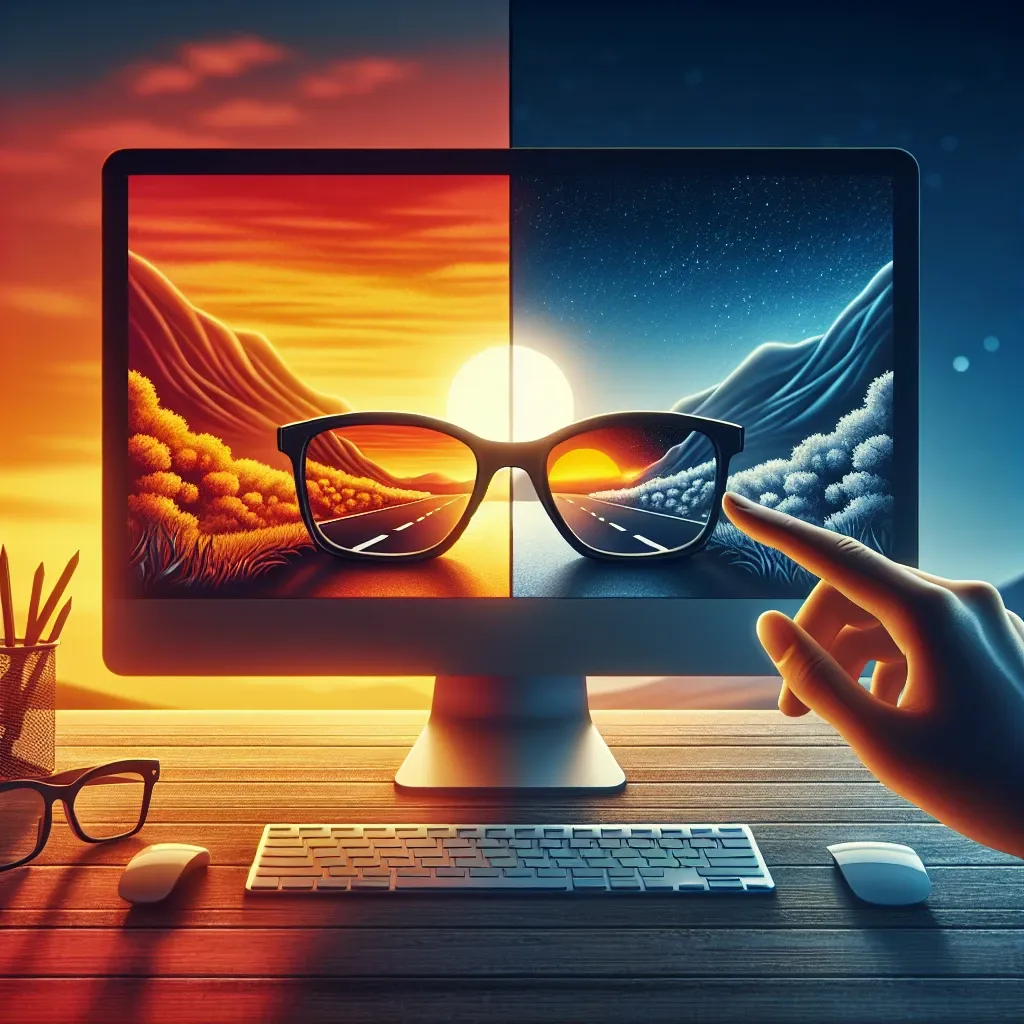Understanding Blue Light
In today’s digital age, our reliance on computers and screens has increased dramatically. While technology offers numerous benefits, it also exposes us to blue light, a high-energy visible light that can have various effects on our health. Blue light is emitted by digital screens, including smartphones, tablets, and computers. This light can contribute to eye strain, disrupt sleep patterns, and even lead to long-term vision problems. To safeguard your well-being, it’s crucial to learn how to reduce blue light exposure effectively.
Why Reducing Blue Light is Important
Excessive exposure to blue light can cause discomfort and fatigue, commonly referred to as digital eye strain or computer vision syndrome. Symptoms may include dry eyes, headaches, blurred vision, and difficulty focusing. Moreover, blue light can interfere with the production of melatonin, a hormone that regulates sleep cycles, thus impacting your ability to achieve a restful night’s sleep. According to research, reducing blue light exposure especially in the evening can significantly improve sleep quality.
Effective Ways to Reduce Blue Light Exposure
1. Adjust Display Settings
One of the simplest methods to reduce blue light exposure is to adjust the display settings on your computer. Most operating systems come with built-in features to help you manage blue light.
- Night Shift (Mac): This feature allows your display to shift to warmer colors during evening hours.
- Night Light (Windows): Similar to Night Shift, this feature reduces blue light emissions by adjusting the color temperature of your display.
- Third-Party Applications: Applications like f.lux or Iris can customize your display settings further to minimize blue light exposure.
2. Use Blue Light Glasses
Another effective strategy is to wear blue light blocking glasses. These specialized lenses filter out blue light, helping to reduce eye strain while using computers. Numerous brands offer stylish options that can be worn throughout the day, providing both comfort and protection.
3. Monitor Placement and Distance
The placement and distance of your computer monitor can significantly impact your exposure to blue light. Follow these guidelines:
- Position your monitor: Keep the monitor at eye level, approximately 20 to 30 inches away from your face.
- Angle for comfort: Tilt your monitor slightly away to minimize glare from ambient light sources.
4. Take Regular Breaks
Implementing the 20-20-20 rule can help alleviate eye strain. Every 20 minutes, pause and look at something 20 feet away for at least 20 seconds. This simple exercise relaxes your eye muscles and can significantly reduce discomfort caused by prolonged screen time.
5. Optimize Lighting Conditions
Proper lighting in your workspace can reduce blue light exposure and eye strain. Consider these tips:
- Use diffused lighting: Avoid harsh overhead lights; instead, opt for softer, indirect lighting.
- Adjust window blinds: Limit glare from natural light by adjusting blinds or using curtains.
6. Maintain a Healthy Distance from Screens
Keeping a sufficient distance from your screen is essential. The closer you are, the more blue light exposure you will have. Aim for a distance of at least an arm’s length between your eyes and the screen.
7. Consider Screen Filters
Screen filters can be an effective way to reduce blue light emissions from your device. These filters can be applied directly to your screen, providing an additional layer of protection against blue light while maintaining visibility.
8. Embrace Natural Light
Whenever possible, take breaks during your workday to step outside and expose yourself to natural light. Natural light is beneficial for your eyes and helps regulate your circadian rhythm, promoting better sleep.
9. Limit Screen Time Before Bed
One of the most effective ways to reduce blue light exposure is to limit your screen time in the hours leading up to bedtime. Try to establish a digital curfew where you disconnect from screens at least an hour before sleep. This practice allows your body to naturally produce melatonin, signaling that it’s time for rest.
10. Use Smart Devices
Many modern devices come equipped with blue light reduction settings. Make sure to enable these features to help minimize exposure automatically. Additionally, some devices offer a comfortable reading mode that reduces blue light during night hours.
Conclusion
Reducing blue light exposure is crucial for maintaining eye health and improving sleep quality. By implementing the strategies outlined in this article, you can create a healthier digital environment. Whether it’s adjusting your display settings, wearing blue light glasses, or taking regular breaks, every little action contributes to your overall well-being.
Remember, your eyes are precious; take the necessary steps to protect them while enjoying the benefits of modern technology.

